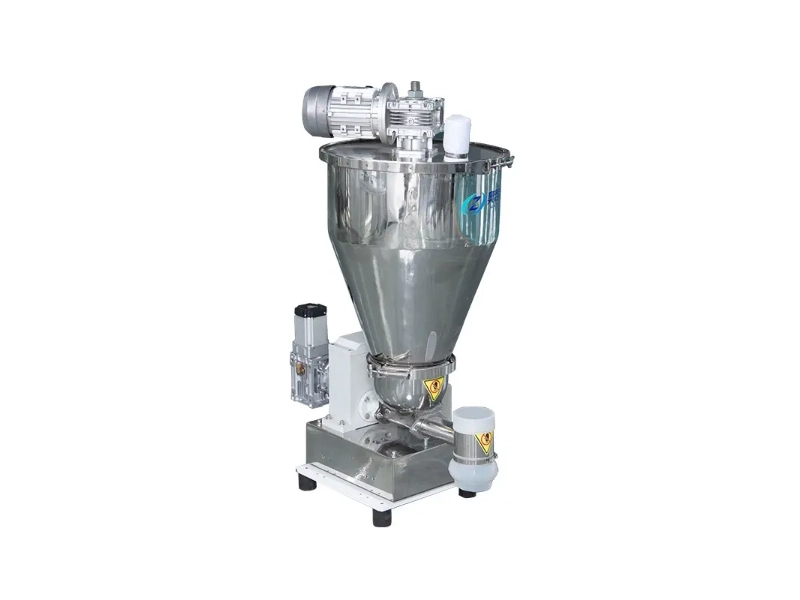Gängige Schraubentypen in Differenzialwaagen
Veröffentlichungszeit: 12.05.2025
Nachfolgend sind die in Differentialdosierern üblicherweise verwendeten Schneckentypen sowie deren Vor- und Nachteile aufgeführt:
1. Einzelschraube
Strukturelle Merkmale: Einzelnes Schraubenblatt dreht sich um die Mittelachse, einfache Struktur, für die meisten Materialien geeignet.
Vorteile:
- Niedrige Kosten: einfacher Aufbau, niedrige Herstellungs- und Wartungskosten.
- Starke Vielseitigkeit: Einschnecken-Differenzialdosierer geeignet zum Fördern von Pulver, Granulaten und anderen nicht klebenden Materialien, zB Kunststoffgranulat
- Leicht zu reinigen: leicht zu zerlegen, geeignet für Szenarien, die einen häufigen Materialaustausch erfordern.
Nachteile: - Leichtes Verstopfen: schlechte Anpassungsfähigkeit an viskose oder leicht verklumpende Materialien (z. B. nasses Pulver, Ton).
- Begrenzte Präzision: Eine geringere Fördergleichmäßigkeit kann die Wiegegenauigkeit beeinträchtigen.
- Schneller Verschleiß: Harte oder stark reibende Materialien können zu schnellem Verschleiß der Klinge führen.
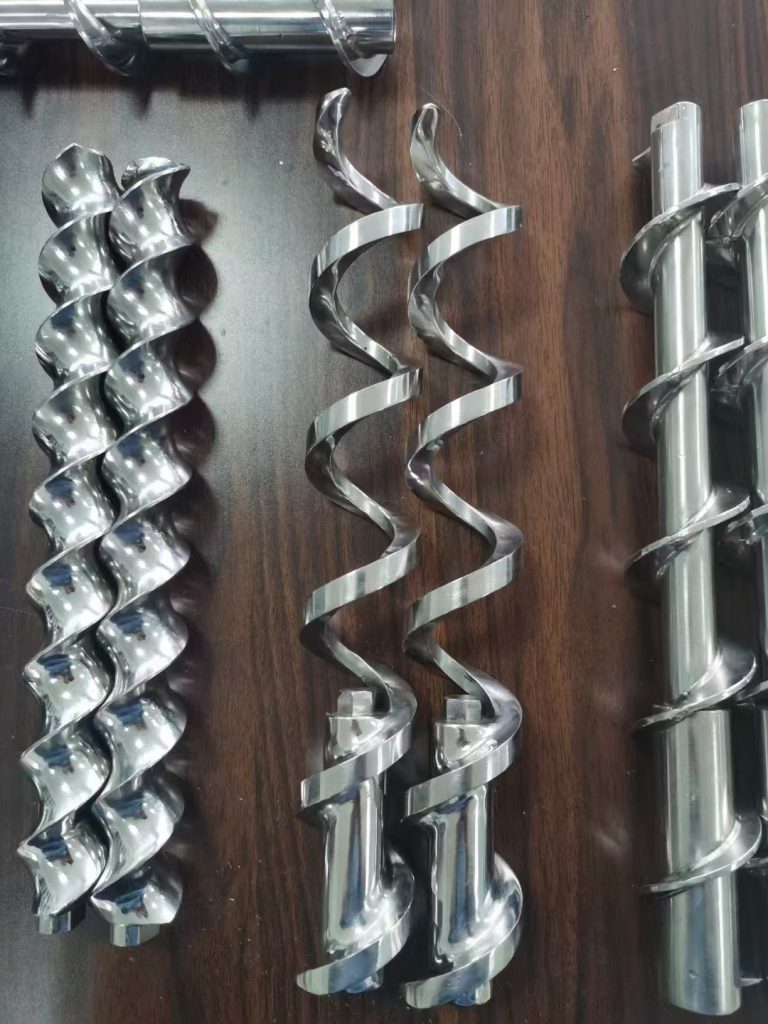
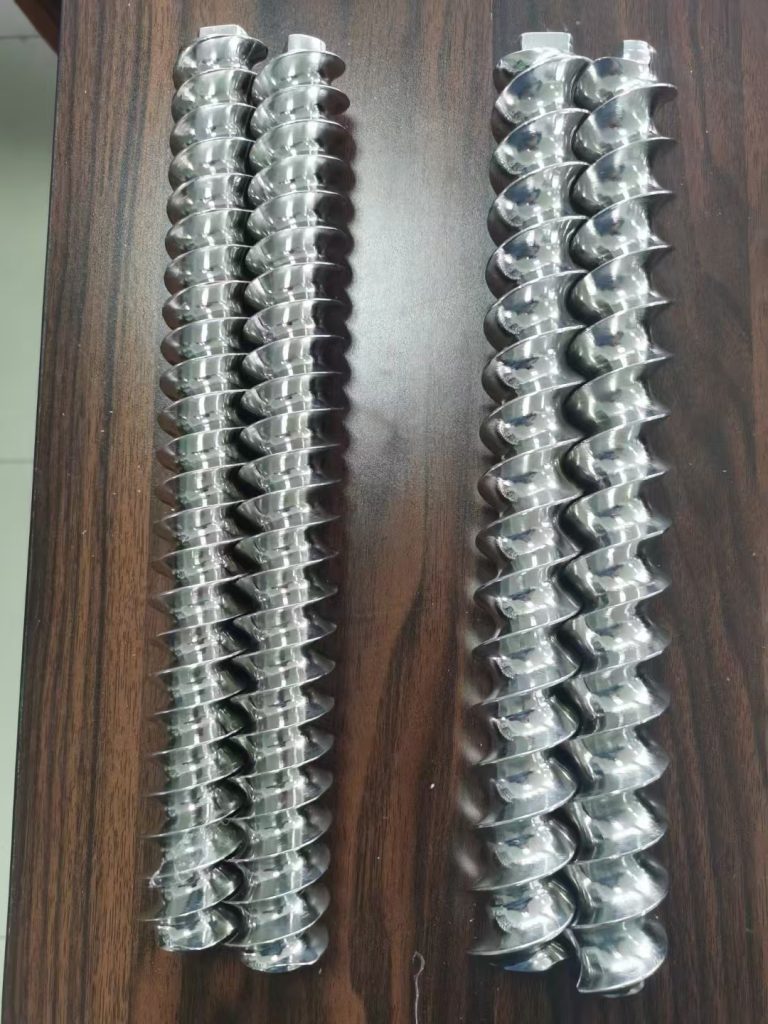
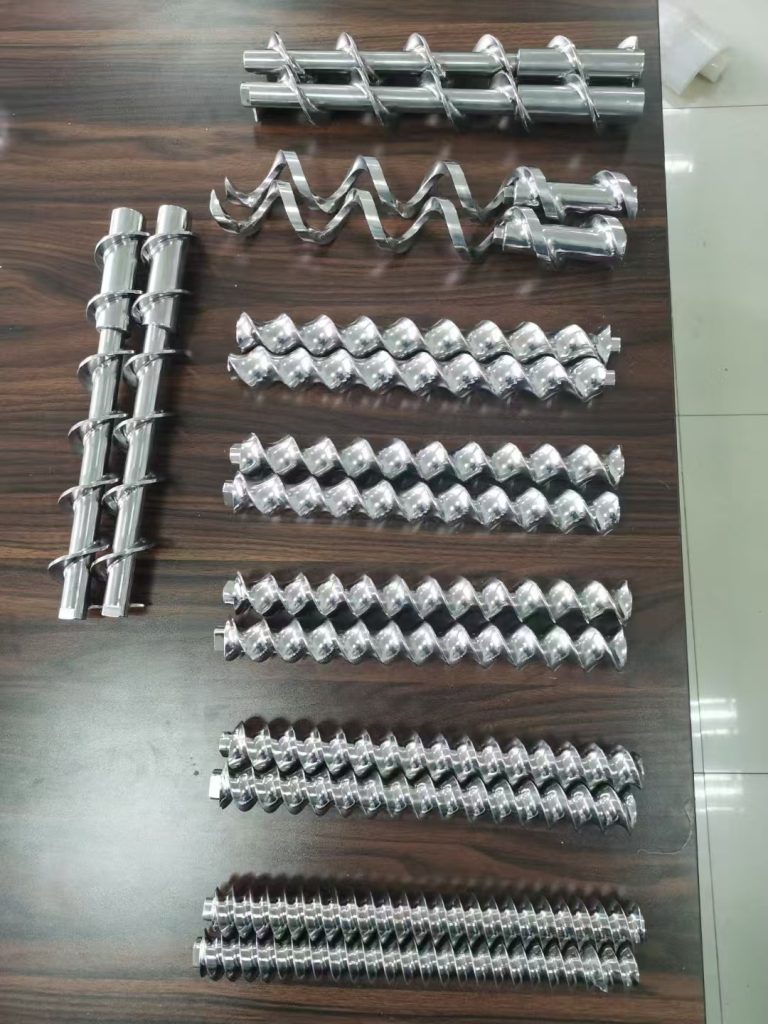
2. Doppelschraube
Konstruktive Besonderheiten: Zwei ineinander greifende Schnecken drehen sich synchron für eine gleichmäßigere Förderung.
Vorteile:
- Hohe Präzision: Doppelschnecken-Differenzialdosierer stabile Förderung, geeignet für Szenarien, die eine hohe Durchflusskontrolle erfordern (z. B. Lebensmittelzusatzstoffe).
- Selbstreinigungsfähigkeit: Das Maschendesign reduziert Materialrückstände, geeignet für klebrige Materialien (z. B. Schokoladensirup).
- Gute Verstopfungsbeständigkeit: Geeignet für Materialien, die zur Brücken- oder Verklumpung neigen.
Nachteile: - Hohe Kosten: komplexe Struktur, hohe Herstellungs- und Wartungskosten.
- Hoher Energieverbrauch: Doppelantrieb kann den Stromverbrauch erhöhen.
- Eingeschränkter Anwendungsbereich: Bei ultrafeinen Pulvern kann es aufgrund von Platzproblemen zu Undichtigkeiten kommen.
3. Riemenschraube
Konstruktive Merkmale: Die Schneckenblätter sind gebändert und weisen einen großen Abstand zur Rohrwand auf.
Vorteile:
- Geringe Scherkraft: geeignet für spröde Materialien, die leicht brechen (z. B. Kartoffelchips, aufgeblasene Lebensmittel).
- Antihaftwirkung: verringert die Materialhaftung, geeignet für zucker- oder fetthaltige Materialien (z. B. Bonbons, Nüsse).
Nachteile: - Geringe Förderleistung: geeignet für Szenarien mit niedriger Geschwindigkeit und geringer Kapazität.
- Leichter Verschleiß: Die Riemenblätter weisen eine geringe Festigkeit auf und verformen sich bei längerem Gebrauch leicht.
4. Hohlschraube
Strukturelle Merkmale: Die Mitte der Schraube ist eine hohle Struktur, durch die Kühlmittel oder Heizmedium fließen können.
Vorteile:
- Temperaturregelung: Geeignet für wärmeempfindliche Materialien (z. B. Harz, Schokolade) oder Materialien, die erhitzt und geschmolzen werden müssen.
- Anti-Curing: verhindert das Abkühlen und Aushärten von Materialien während des Transports.
Nachteile: - Komplizierte Struktur: erfordert passendes Temperaturkontrollsystem, hohe Kosten.
- Wartungsschwierigkeiten: Hohe Anforderungen an die Abdichtung und Auslaufsicherheit.
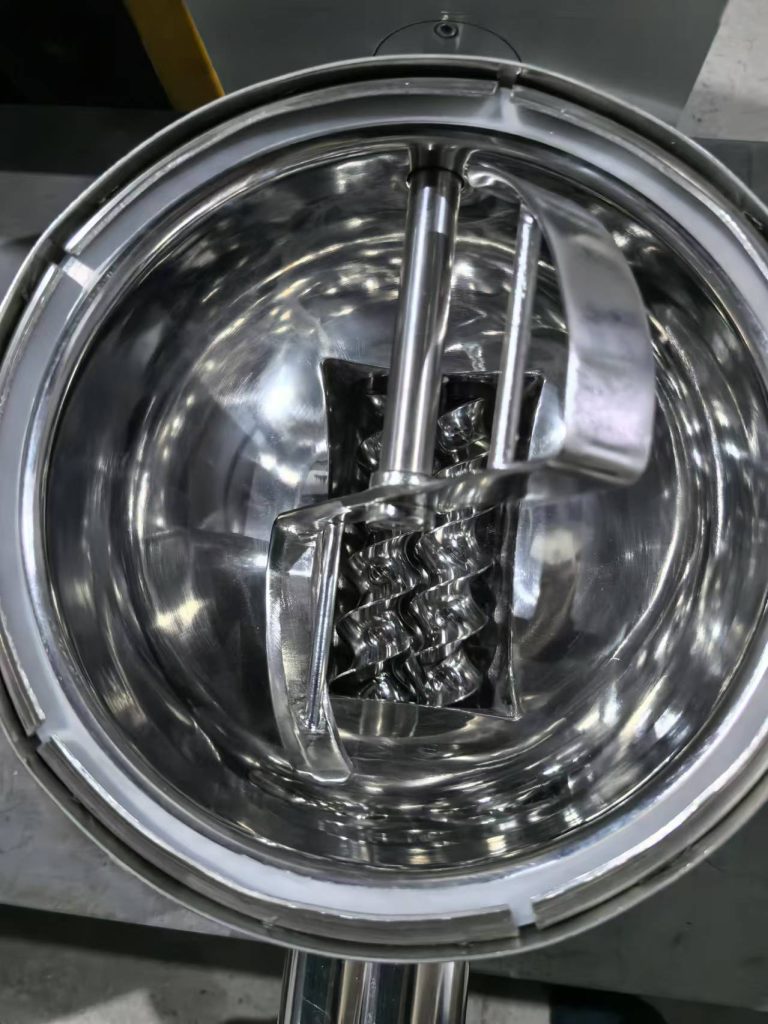
Vorschläge zur Auswahl:
- Pulver-/Granulatmaterial: Einzelschnecke oder Doppelschnecke (je nach Präzisionsanforderungen).
- Klebrige/verklumpende Materialien: Doppelschnecke
- Wärmeempfindliche Materialien: Hohlschraube.
- Spröde/brüchige Materialien: Riemenschraube.
Die tatsächliche Anwendung muss mit den Materialeigenschaften, dem Kostenbudget und den Wartungsbedingungen einer umfassenden Auswahl für kombiniert werden Differentialdosierer.


